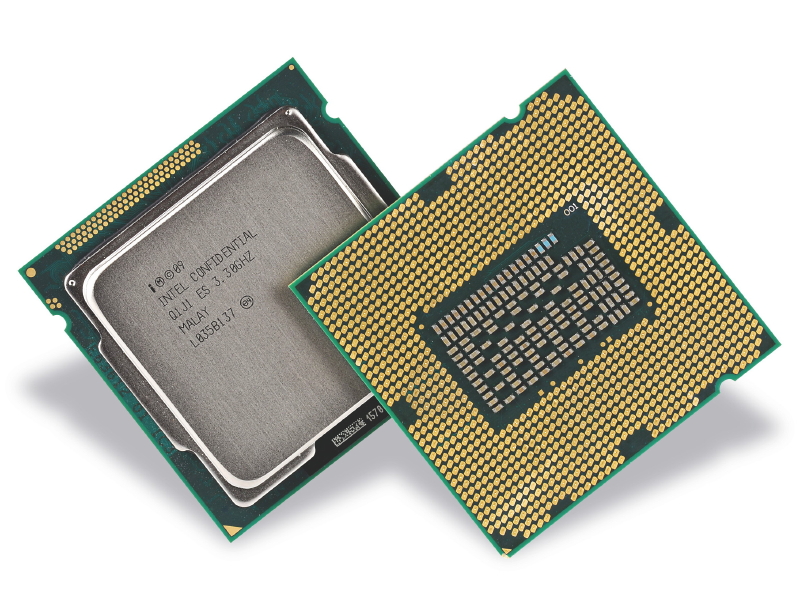Why you can trust TechRadar
First a quick précis of our review chips. The Intel Core i5-2500K is a quad-core, quad-thread chip with 6MB of L3 cache memory and clocks in at 3.3GHz standard and 3.7GHz maximum Turbo frequency. It's yours for approximately £160 unboxed and effectively replaces both the old dual-core Core i5-655K and quad-core Core i5-760.
A partially locked Core i5-2500 is also available at the same clockspeeds for about £10 less.
The £225 Core i7 -2600K, meanwhile, sports four cores, eight threads, 8MB of cache as standard and Turbo frequencies of 3.4GHz and 3.8GHz respectively. It slots in approximately where you would previously have found the likes of the Core i7-870 and Core i7-875K processors in the price list. Again, there's also a marginally cheaper Core i7-2600 alternative that lacks the fully unlocked multiplier.
With all that logged away, it's time for some performance analysis. In a word, these chips are stunning.
At stock clocks, the new Core i5-2500K comprehensively blows away an old Core i7-870. Put another way, the new mid-range chip hammers the old high-end offering. It's literally faster in every benchmark including video encoding, gaming and professional rendering and sometimes by a margin of over 10 per cent. As for the comparison to the old Core i5-760, it's brutal. The new chip is as much as 30 to 40 per cent quicker.
Unsurprisingly, then, the new Core i7-2600K absolutely hoses its progenitor, the Core i7-870. We're talking 25 to 30 per cent more performance absolutely, positively everywhere.
If that wasn't astonishing enough, the i7-2600K actually gives Intel's mighty Core i7-980X six-core flagship processor a real scare. The 980X is, for instance, only about 10 per cent quicker in the Cinebench rendering test and 20 per cent faster in HD video encoding. But it's slower for gaming.
Sign up for breaking news, reviews, opinion, top tech deals, and more.
Remember, the i7-980X is a £750 processor.
If you're wondering where the performance gains come from, much is down to increased clockspeeds, but the new processors would still be 10 per cent quicker even running at the same frequencies. Somehow, Intel has made the fastest CPU architecture on the planet significantly faster.
As for overclocking, the news only gets better. Our i5-2500K hits the wall at 4.4GHz, while the i7-2600K motors on to 4.6GHz. That's courtesy of an air cooler. It's silly numbers, frankly.
As if that wasn't enough, the Quick Sync Video hardware transcoding engine adds yet another dimension. Using a special build of Cyberlink MediaShow Expresso, it's possible to compare video encoding with and without the transcoder enabled. Our test video is crunched in 45 seconds in software mode. Flick the switch on the transcoder and it drops to just 12 seconds. Bonkers.
Finally, there's the performance of the new Intel HD Graphics 3000. Here again, it's a story of massively improved grunt. Put simply, it's over twice as fast as the previous Intel HD graphics and massively quicker than any other integrated solution. It's genuinely up to the task of playing older games such as Call of Duty 4 at decent detail settings.
Newer titles, however, require lower resolutions and defenestrated eye candy.
Current page: Intel Core i5-2500K review: Performance
Prev Page Intel Core i5-2500K review: Benchmarks Next Page Intel Core i5-2500K review: VerdictTechnology and cars. Increasingly the twain shall meet. Which is handy, because Jeremy (Twitter) is addicted to both. Long-time tech journalist, former editor of iCar magazine and incumbent car guru for T3 magazine, Jeremy reckons in-car technology is about to go thermonuclear. No, not exploding cars. That would be silly. And dangerous. But rather an explosive period of unprecedented innovation. Enjoy the ride.
